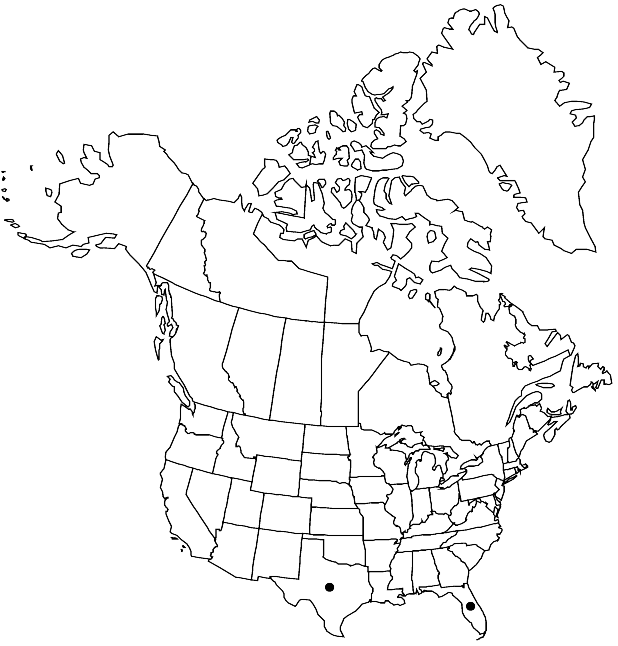Cakile lanceolata
in I. Urban, Symb. Antill. 3: 504. 1903.
Annuals, (usually sprawling). Stems erect to prostrate, (much-branched), often 5+ dm. Cauline leaves (shortly petiolate or sessile); blade broadly ovate to ovate-lanceolate, or (distal) oblanceolate, (not especially fleshy, smaller distally), margins entire, dentate, or pinnatisect. Racemes often 3+ dm; rachis straight. Fruiting pedicels 1.5–4 mm. Flowers: sepals 3.5–5 mm, lateral pair saccate basally; petals usually white, rarely lavender, 4.9–9.4 × 3–4.5 mm, claw distinct. Fruits (weakly 4-angled to terete, striate or sulcate), fusiform or lanceoloid [turbinate], 15–31 × 3–4 mm; proximal segment terete, (5–10 mm); terminal segment slenderly conical, (9–18 mm), apex usually acute. Seeds: cotyledons accumbent or, occasionally, incumbent.
Distribution

Fla., Tex., Mexico, West Indies, Central America.
Discussion
Subspecies 4 (3 in the flora).
Subspecies alacranensis is known from the Yucatán Peninsula.
Selected References
None.
Lower Taxa
Key
| 1 | Fruits lanceoloid, apex not tapering abruptly, terminal segment at least 2 times length of proximal segment; leaf blades: margins usually sinuately or crenately lobed, rarely pinnatisect. | Cakile lanceolata subsp. lanceolata |
| 1 | Fruits fusiform or lanceoloid, apex tapering abruptly, terminal segment less than 2 times length of proximal segment; leaf blades: margins pinnatifid or entire | > 2 |
| 2 | Fruits fusiform, not constricted at articulation, 4- or 8-sulcate. | Cakile lanceolata subsp. fusiformis |
| 2 | Fruits lanceoloid, usually constricted at articulation, weakly 4-angled or terete. | Cakile lanceolata subsp. pseudoconstricta |